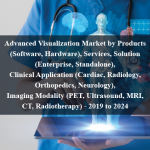OVERVIEW
The Metal Implants and Medical Alloys Market is currently valued at USD 17.60 billion in 2024 and will be growing at a CAGR of 10.5% over the forecast period to reach an estimated USD 29 billion in revenue in 2029. The metal implants and medical alloys market plays a crucial role in modern healthcare, providing essential materials for a wide range of medical devices and implants. These alloys, often made of titanium, stainless steel, cobalt-chromium, and other metals, are utilized in orthopedic implants, dental implants, cardiovascular devices, and various surgical instruments. Their biocompatibility, strength, and durability make them ideal for replacing or supporting damaged bones, joints, and tissues within the human body. As the global population ages and the demand for advanced medical treatments grows, the market for metal implants and medical alloys continues to expand, driven by technological advancements, increasing prevalence of chronic diseases, and a rising number of orthopedic and dental procedures worldwide. Additionally, ongoing research and development efforts aimed at enhancing the properties and performance of these materials further contribute to the market’s growth and innovation, ensuring safer and more effective medical solutions for patients.
Advancements in medical technology continually push the boundaries of what is possible in healthcare, leading to the development of more sophisticated implants and devices that require high-performance materials. Secondly, an aging global population contributes to increased demand for orthopedic and dental procedures, as age-related conditions such as osteoarthritis and tooth decay become more prevalent. Thirdly, rising awareness about the benefits of medical implants, such as improved quality of life and mobility, fuels patient demand. Additionally, ongoing research and development efforts aimed at enhancing the biocompatibility, strength, and durability of medical alloys drive innovation within the market, opening up new opportunities for growth and expansion. Furthermore, favorable reimbursement policies and healthcare infrastructure development in emerging markets contribute to the market’s overall growth by expanding access to medical treatments and devices.
Table of Content
Market Dynamics
Drivers:
Advancements in medical technology continually push the boundaries of what is possible in healthcare, leading to the development of more sophisticated implants and devices that require high-performance materials. Secondly, an aging global population contributes to increased demand for orthopedic and dental procedures, as age-related conditions such as osteoarthritis and tooth decay become more prevalent. Thirdly, rising awareness about the benefits of medical implants, such as improved quality of life and mobility, fuels patient demand. Additionally, ongoing research and development efforts aimed at enhancing the biocompatibility, strength, and durability of medical alloys drive innovation within the market, opening up new opportunities for growth and expansion. Furthermore, favorable reimbursement policies and healthcare infrastructure development in emerging markets contribute to the market’s overall growth by expanding access to medical treatments and devices.
Key Opportunities:
The metal implants and medical alloys market presents several key opportunities for growth and innovation. One prominent opportunity lies in the development of advanced materials with enhanced biocompatibility, strength, and durability, meeting the increasing demand for long-lasting implants. Furthermore, the expansion of applications beyond traditional orthopedic and dental implants to include areas such as cardiovascular devices and surgical instruments opens up new avenues for market expansion. Additionally, the growing trend towards personalized medicine offers opportunities for the customization of implants to meet individual patient needs, leveraging technologies such as 3D printing and biomaterials engineering. Moreover, the rising adoption of minimally invasive surgical techniques creates demand for smaller, lighter, and more flexible implants, driving innovation in material design and manufacturing processes. Furthermore, the increasing focus on sustainability and environmental responsibility presents opportunities for the development of eco-friendly alloys and recycling initiatives, aligning with the broader societal trends towards greener healthcare solutions.
Restraints:
One significant challenge is the high cost associated with the development and manufacturing of advanced medical alloys, which can limit their accessibility, particularly in emerging markets and for patients with limited financial means. Additionally, regulatory hurdles and stringent approval processes for new medical devices and materials can delay market entry and increase development costs, hindering innovation and competitiveness. Moreover, concerns about the long-term safety and biocompatibility of certain metal alloys, such as nickel sensitivity and corrosion issues, pose challenges for manufacturers and healthcare providers, necessitating rigorous testing and compliance with regulatory standards. Furthermore, geopolitical tensions, trade disputes, and fluctuations in raw material prices can disrupt the supply chain and affect the availability and affordability of medical alloys, impacting market stability. Lastly, the emergence of alternative materials, such as biodegradable polymers and ceramic composites, presents competition and alternative options for medical device manufacturers, posing a threat to the dominance of metal implants in certain applications.
Regional Information:
• In North America, the metal implants and medical alloys market is characterized by robust research and development activities, stringent regulatory standards, and high healthcare expenditures. The region boasts a mature market with a strong presence of leading medical device manufacturers and technological innovators, driving advancements in material science and implant technologies. Additionally, favorable reimbursement policies and a large patient pool contribute to the widespread adoption of medical implants, particularly in orthopedic and dental applications. However, rising healthcare costs and increasing competition from generic implants pose challenges for market players, necessitating continuous innovation and cost-effective solutions to maintain competitiveness.
• In Europe, the metal implants and medical alloys market benefits from a well-established healthcare infrastructure, comprehensive regulatory frameworks, and a strong emphasis on patient safety and quality standards. The region is home to several prominent medical device companies and research institutions, driving innovation and technological advancements in implant materials and manufacturing processes. Moreover, favorable reimbursement policies and a growing elderly population contribute to the steady demand for orthopedic and dental implants. However, economic uncertainties, Brexit implications, and pricing pressures from government healthcare systems present challenges for market growth, requiring strategic adaptation and market diversification.
• In the Asia Pacific region, the metal implants and medical alloys market is poised for significant growth, driven by rapid urbanization, expanding healthcare infrastructure, and increasing disposable incomes. Countries like China, India, and Japan are emerging as key markets, supported by growing investments in healthcare and rising patient awareness about the benefits of medical implants. Furthermore, favorable demographic trends, such as a large aging population and a rising prevalence of chronic diseases, create opportunities for market expansion.
Recent Developments:
• June 2022: OsssDsign announced that the company launched of OssDsign Cranial PSI in Japan. OssDsign Cranial PSI is a patient-specific cranial implant made from 3D-printed medical-grade titanium covered by a regenerative calcium phosphate composition.
• March 2022: OSSIO Inc. achieved another significant commercial milestone with its third regulatory clearance from the United States Food and Drug Administration (FDA) for the OSSIOfiber product family in the last four months, paving the way for additional implants made from OSSIOfiber Intelligent Bone Regeneration Technology to be available to patients and surgeons over the next six months.
Key Market Players:
Johnson & Johnson, Stryker Corporation, Zimmer Biomet Holdings, Smith & Nephew plc, Medtronic plc, Wright Medical Group N.V., Lobus Medical Inc., Boston Scientific Corporation, Densply Sirona Inc., and B. Braun Melsungen AG.
Frequently Asked Questions
1) What is the projected market value of the Metal Implants and Medical Alloys Market?
– The Metal Implants and Medical Alloys Market is expected to reach an estimated value of USD 29 billion in revenue by 2029.
2) What is the estimated CAGR of the Metal Implants and Medical Alloys Market over the 2024 to 2029 forecast period?
– The CAGR is estimated to be 10.5% for the Metal Implants and Medical Alloys Market over the 2024 to 2029.
3) Who are the key players in the Metal Implants and Medical Alloys Market?
– Johnson & Johnson, Stryker Corporation, Zimmer Biomet Holdings, Smith & Nephew plc, Medtronic plc, Wright Medical Group N.V., Lobus Medical Inc., Boston Scientific Corporation, Densply Sirona Inc., and B. Braun Melsungen AG.
4) What are the drivers for the Metal Implants and Medical Alloys Market?
– Advancements in medical technology drive the development of advanced implants and devices, driven by the aging global population, rising awareness of implant benefits, and ongoing research. This growth is fueled by favorable reimbursement policies and healthcare infrastructure development in emerging markets, which expand access to medical treatments and devices.
5) What are the restraints and challenges in the Metal Implants and Medical Alloys Market?
– The metal implants and medical alloys market faces challenges such as high costs, regulatory hurdles, safety concerns, geopolitical tensions, trade disputes, and fluctuating raw material prices. These factors limit accessibility, especially in emerging markets and for patients with limited financial means. Additionally, the emergence of alternative materials like biodegradable polymers and ceramic composites presents competition and alternatives, requiring strategic planning and innovative solutions to overcome these restraints.
6) What are the key applications and offerings of the Metal Implants and Medical Alloys Market?
– Key applications of metal implants and medical alloys include orthopedic implants such as hip and knee replacements, dental implants for tooth restoration and support, cardiovascular devices including stents and pacemakers, and surgical instruments used in various medical procedures. These applications leverage the biocompatibility, strength, and durability of medical alloys to provide effective solutions for patients with musculoskeletal disorders, dental issues, cardiovascular conditions, and other medical needs. Additionally, advancements in material science and manufacturing techniques continue to expand the scope of applications, driving innovation and improving patient outcomes across diverse medical specialties.
7) Which region is expected to drive the market for the forecast period?
– North America is expected to have the highest market growth from 2024 to 2029
Why Choose Us?
Insights into Market Trends: Global Market Studies reports provide valuable insights into market trends, including market size, segmentation, growth drivers, and market dynamics. This information helps clients make strategic decisions, such as product development, market positioning, and marketing strategies.
Competitor Analysis: Our reports provide detailed information about competitors, including their market share, product offerings, pricing, and competitive strategies. This data can be used to inform competitive strategies and to identify opportunities for growth and expansion.
Industry Forecasts: Our reports provide industry forecasts, which will inform your business strategies, such as investment decisions, production planning, and workforce planning. These forecasts can help you to prepare for future trends and to take advantage of growth opportunities.
Access to Industry Experts: Our solutions include contributions from industry experts, including analysts, consultants, and subject matter experts. This access to expert insights can be valuable for you to understand the market.
Time and Cost Savings: Our team at Global Market Studies can save you time and reduce the cost of conducting market research by providing comprehensive and up-to-date information in a single report, avoiding the need for additional market research efforts.












